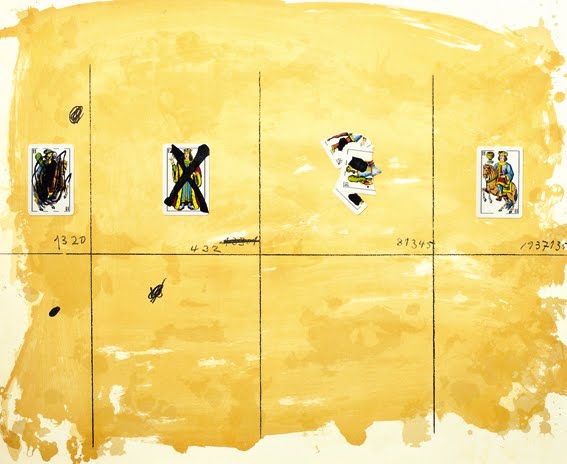
The exhibition includes the series of drawings entitled Sèrie Teresa (Teresa’s Series, 1966), together with the series of lithographs, litho-collages and collages Cartes per a la Teresa (Letters to Teresa, 1974), pays tribute to their relationship by celebrating a private language accessible only to those who spoke it.
In Memòria personal (A Personal Memoir, 1977), Tàpies recalls ‘the clear green of [Teresa’s] eyes, her fine and blond hair, her Slavic cheekbones, her appealing lips…’
Antoni Tàpies (1923–2012) met Teresa Barba (1934–) at the end of the 1940s, when she was still a young girl. A few years earlier, she had lost her mother and had to take care of her five siblings, while looking after her father. This gave her a maturity and humanity uncommon for her age. During the artist’s stay in Paris in 1950–51, they exchanged a regular and intense correspondence that united them through intimate links. On Tàpies return from Paris, they formalised their relationship and in October 1954 Antoni Tàpies and Teresa Barba were married in Barcelona.
The presentation of the series of drawings entitled Sèrie Teresa (Teresa’s Series, 1966), together with the series of lithographs, litho-collages and collages Cartes per a la Teresa (Letters to Teresa, 1974), pays tribute to their relationship by celebrating a private language accessible only to those who spoke it. The two sets of works display a repertoire of signs without translation for the viewer: a series of gestures that preserves the couple’s intimacy despite explicit allusions to domesticity and a shared sexuality.
Both titles refer to the methodology of serial music with which the possible combinations of the series of twelve tones is explored. Tàpies considered that music, freed from the more traditional narrative, was a purer form of expression. So he decided to apply this methodology to drawing. When in 1971 he made the series Cartes per a la Teresa (published in 1974 in the form of a portfolio), the artist plays with the double meaning of the word carta (letter and card). On the one hand, a written communication that alludes to the romantic correspondence between him and Teresa, and, on the other, in a far more esoteric sense, referring to a stack of cards used to play certain games or to perform illusionist tricks.
Teresa is also a name that carries a political meaning. As Tàpies said in the fragments for his autobiography, ‘in the early sixties […] Teresa and I lived more intensely than ever the injustice wrought onto our vexed country, onto the working classes, onto the devoted members of the opposition. We became aware of the struggle one had to sustain to demand the most elementary rights that should be enjoyed in any democratic country. Both Teresa and I felt a growing identification with that struggle.’ (F.Tápies press-release)
Fundació Antoni Tápies. Aragó 255. 08007 Barcelona
https://www.fundaciotapies.org
Image: Fundació Antoni Tápies
